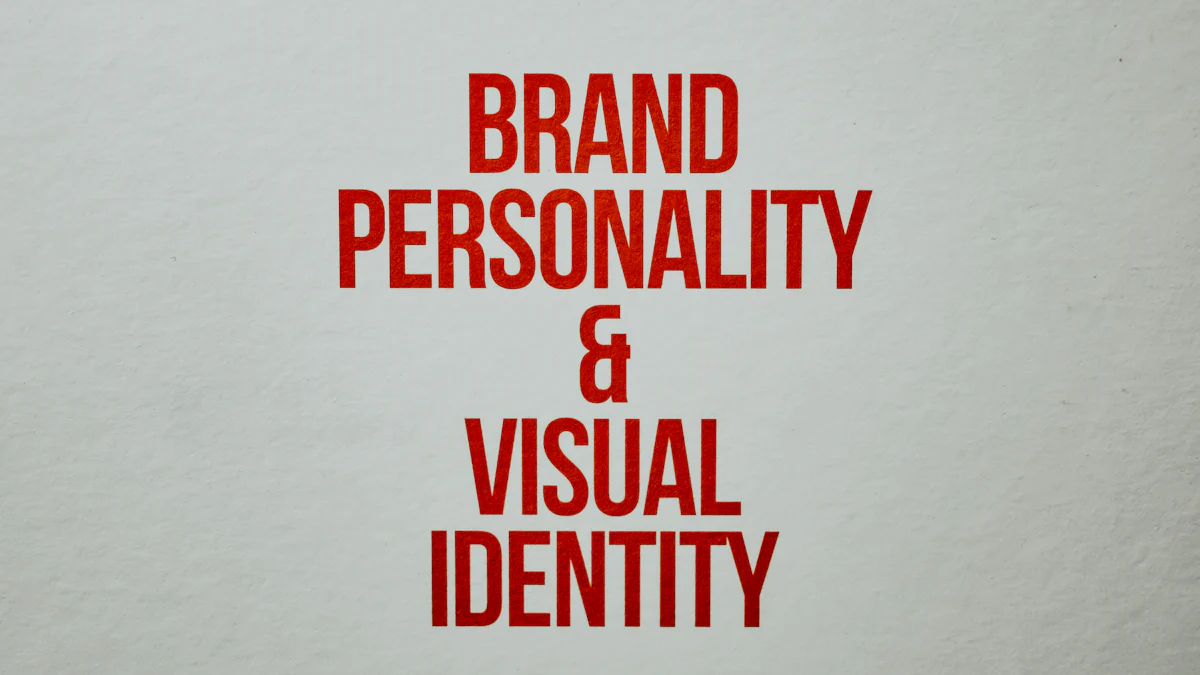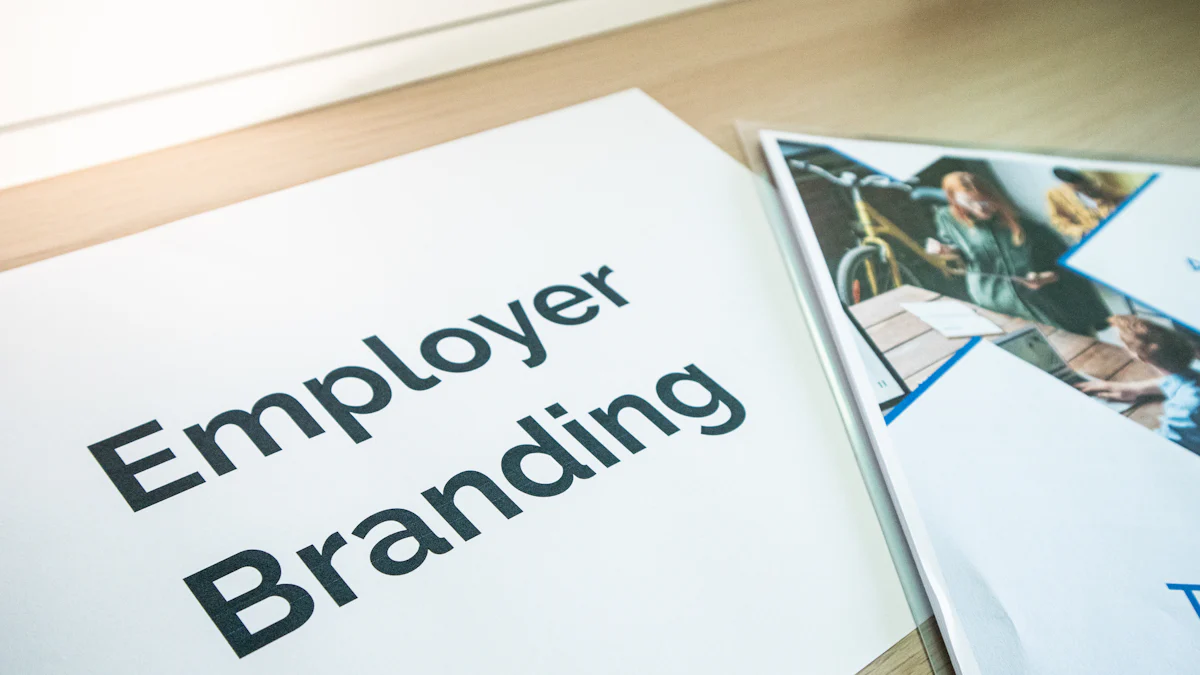How to Enhance Your Brand Image During Recruitment in 2025

Your brand image during recruiting plays a vital role in attracting top talent. Companies with strong employer branding receive 50% more qualified applicants, and 75% of job seekers evaluate a brand before applying. In 2025, recruitment marketing faces unique challenges. Candidates expect personalized experiences, faster hiring processes, and a focus on diversity, equity, and inclusion (DEI). Flexible work arrangements and advancements in AI further shape recruiting strategies. Prioritizing these elements not only enhances your recruitment efforts but also strengthens your competitive edge in hiring.
Key Takeaways
A strong company image brings in top workers. Clear branding gets 50% more skilled applicants.
Giving personal experiences to candidates is key. Use AI tools to customize talks and make hiring easier.
Show diversity, fairness, and inclusion (DEI) in your brand. Share DEI efforts to attract people from all backgrounds.
Use employees to promote your company online. Ask them to share their stories to build trust and honesty.
Flexible work options are very important. Mention remote and hybrid jobs to attract today’s workers.
Employer Branding in 2025

Defining Employer Branding
Employer branding refers to your company’s reputation and how it stands out to potential employees. It’s about promoting your organization as an employer of choice to attract and retain top talent. This process involves crafting and communicating what makes your workplace unique. A strong employer brand highlights your values, culture, and mission, showing candidates why your company is a great place to work. It also ensures current employees feel valued and engaged, creating a consistent and positive identity.
The Importance of Employer Branding in Recruitment
Your employer branding plays a critical role in recruitment marketing. It shapes how candidates perceive your company and influences their decision to apply. A strong employer brand differentiates you from competitors, boosts employee morale, and reduces hiring costs. For example, companies with a clear employer value proposition (EVP) see a 50% reduction in cost-per-hire. Metrics like quality of hire, time-to-fill, and offer acceptance rates improve when your branding aligns with candidate expectations. Millennials and Gen Z, who prioritize meaningful work and shared values, are especially drawn to companies with strong employer branding.
Metric | Description |
|---|---|
Quality of Hire | Measure the performance and retention of new hires. |
Time-to-Fill | Track the average time taken to fill open positions. |
Offer Acceptance Rate | Monitor the percentage of job offers accepted by candidates. |
Cost-per-Hire | Calculate the average cost associated with hiring new employees. |
Source of Hire | Identify which channels are most effective in attracting quality candidates. |
Trends Shaping Employer Branding in 2025
Emerging trends in 2025 are reshaping how you approach employer branding. AI-powered tools are transforming recruitment marketing by improving application quality and personalizing candidate experiences. Social media platforms like LinkedIn and Instagram are essential for showcasing your brand and engaging candidates. Employee advocacy is another key trend, with storytelling campaigns like Adobe’s #AdobeLife generating higher engagement. Flexibility remains a priority, as 30% of students globally value flexible work schedules. Additionally, mental health initiatives and sustainability efforts are becoming critical for candidate attraction. Companies that integrate these trends into their employer branding strategies will stay ahead in the competitive recruiting landscape.
Trend | Evidence |
|---|---|
AI-Powered Tools | GitLab’s AI-driven platform improved application quality by 40%. |
Virtual Reality | 65% of large organizations use VR in employer branding initiatives. |
Employee Experience Platforms | 82% of Fortune 500 companies invest in integrated employee experience technologies. |
Authentic Storytelling | Adobe’s #AdobeLife campaign generates 200% more engagement than traditional job posts. |
Data-Driven Approach | IBM’s predictive analytics led to a 45% increase in qualified applications. |
Consistent Message | Netflix’s culture deck maintains message consistency across platforms. |
Strategies to Strengthen Brand Image During Recruiting
Leveraging AI and Automation
Personalized Candidate Engagement with AI
AI tools allow you to create tailored interactions that meet candidate expectations. Chatbots can handle initial queries, providing instant responses and freeing up recruiters for strategic tasks. AI algorithms also enhance candidate matching by analyzing resumes and aligning them with job requirements and company culture. These tools ensure a candidate-centric approach, making candidates feel valued and understood. Regularly assess your AI tools to eliminate biases and maintain fairness in hiring. Training your team to use these technologies effectively ensures a seamless integration into your recruitment strategies.
Streamlining Recruitment Tasks for Efficiency
Automation simplifies repetitive tasks like resume screening and interview scheduling. This reduces the time spent on administrative work, allowing you to focus on building relationships with candidates. AI-powered tools can analyze video interviews, providing insights into responses and body language. To maintain trust, ensure your recruitment automation complies with privacy laws. Partnering with technology providers that align with your values strengthens your employer brand and builds credibility.
Enhancing Candidate Experience
Simplifying Application Processes
A smooth application process is essential for meeting candidate expectations. Simplify forms and reduce unnecessary steps to make it user-friendly. Analytics can help identify bottlenecks, enabling you to streamline the process further. A positive candidate experience increases engagement with job postings and improves the quality of hires. By prioritizing simplicity, you enhance your brand image during recruiting.
Transparent and Respectful Communication
Clear and consistent communication builds trust with candidates. Provide timelines for each stage of the recruitment process and offer regular updates. Personalize your messages to show candidates you value their time and effort. Feedback after interviews, even for unsuccessful candidates, leaves a lasting positive impression. Transparent communication aligns with a strong employer branding strategy, fostering goodwill and loyalty.
Promoting DEI in Recruitment Marketing
Showcasing DEI Initiatives in Employer Branding
Highlighting your DEI efforts strengthens your employer brand and attracts diverse talent. Share employee stories and values on your careers page to demonstrate inclusivity. Companies like Chipotle and SmartRecruiters have successfully used this approach to enhance their recruitment marketing. Regular DEI audits and training for hiring teams ensure fairness and consistency in your practices.
Inclusive Job Descriptions and Practices
Inclusive job descriptions reflect your commitment to diversity and fairness. Use gender-neutral language and avoid jargon that may deter candidates from underrepresented groups. Structured interviews and diverse hiring panels further promote unbiased assessments. These practices align with candidate expectations and reinforce your brand image during recruiting.
Employee Advocacy and Storytelling for Recruitment Marketing
Empowering Employees to Share Their Stories
Social Media as a Tool for Employee Advocacy
Social media platforms offer a powerful way to amplify employee voices. When employees share their experiences, they add credibility to your recruitment marketing efforts. Individuals are often trusted more than brands or executives, as highlighted by the Edelman Trust Barometer. By empowering employees to post about their work life, you create a relatable and authentic employer brand. Encourage them to share their achievements, team activities, or personal growth stories. This approach not only strengthens your brand but also fosters a sense of pride among your workforce.
Highlighting Employee Experiences in Recruitment Content
Incorporating employee experiences into your recruitment content makes your company more appealing to candidates. Personal stories showcase unique perspectives and help candidates envision themselves as part of your team. Highlighting these experiences through blogs, testimonials, or videos humanizes your employer brand. It also demonstrates your commitment to a positive employee experience. This strategy builds trust and attracts candidates who align with your values.
Building Authentic Connections Through Storytelling
Real-Life Success Stories to Humanize the Brand
Sharing real-life success stories creates an emotional connection with candidates. These stories provide authenticity and serve as social proof, validating your company’s claims. For example, employee testimonials breathe life into your employer brand by offering genuine insights. They also enhance engagement among current employees, fostering a sense of belonging. Candidates are more likely to trust and connect with a brand that highlights its people’s achievements.
Using Video Content to Showcase Company Culture
Video content is one of the most impactful ways to showcase your company culture. It allows for clear communication and fosters transparency. Videos featuring employee success stories inspire candidates and motivate your workforce. Recruitment ads with embedded videos see 800% more engagement, making them a valuable tool for recruitment marketing. Use videos to highlight your values, share team activities, or provide a glimpse into daily work life. This approach helps candidates feel connected and excited about joining your team.
Flexible Work and Creative Benefits as Employer Brand Drivers

Adopting Remote and Hybrid Work Models
Promoting Flexibility in Job Postings
Flexibility in work arrangements has become a top priority for candidates. Highlighting remote or hybrid options in your job postings can attract a broader talent pool. Many employees now prefer the ability to "work from anywhere," with 36% expressing this preference. Employers have also recognized the benefits, with 66% reporting improved productivity. Including flexible schedules in your postings demonstrates your commitment to meeting modern workplace expectations. Companies that adopt flexible hours have seen a 13% increase in productivity and a 30% reduction in turnover rates. By promoting flexibility, you position your employer brand as forward-thinking and adaptable.
Statistic Description | Percentage |
|---|---|
Employees preferring 'work from anywhere' | 36% |
Employers recognizing positive impact on productivity | 66% |
Employees reporting better productivity outside office | 84% |
Employees expecting workplace preferences to change | 58% |
Supporting Work-Life Balance Initiatives
Work-life balance is a critical factor for candidates evaluating potential employers. Offering flexible schedules, such as a 4-day work week or job sharing, can help employees manage their personal and professional lives. Companies like Salesforce have reported a 16% increase in employee engagement after adopting hybrid models. Incorporating wellness into your employer branding strategy also strengthens your recruiting efforts. For example, ergonomic office designs and fitness facilities can enhance employee satisfaction. Sharing testimonials from employees about these initiatives further reinforces your commitment to their well-being.
Offering Unique and Competitive Benefits
Wellness and Mental Health Programs
Candidates increasingly value wellness and mental health programs. Providing access to mental health services, fitness benefits, and wellness initiatives can set your company apart. Health and wellness programs are essential for attracting and retaining top talent. Paid parental leave and surrogacy benefits also appeal to candidates seeking family-friendly policies. However, studies like the Illinois Workplace Wellness Study suggest that wellness programs must go beyond surface-level offerings to maintain long-term impact. Tailoring these programs to employee needs ensures they remain effective and relevant.
Professional Growth Opportunities
Professional development opportunities are another key driver for candidates. Offering mentorship programs, training sessions, and career advancement paths can enhance your employer brand. Candidates are more likely to choose companies that invest in their growth. Financial wellness programs, such as tailored financial advice and Employee Assistance Programs (EAP), also address modern challenges. These benefits demonstrate your commitment to supporting employees both professionally and personally. By prioritizing growth and wellness, you create a workplace that candidates want to join and stay with.
Data-Driven Recruitment and Social Media Advertising
Optimizing Recruitment with Analytics
Tracking Metrics to Improve Hiring Outcomes
Tracking the right metrics helps you refine your recruiting process and improve outcomes. Start by monitoring time-to-fill, which measures how quickly you can close open positions. This metric impacts costs and ensures you don’t lose top talent to competitors. Cost-per-hire is another essential metric. It helps you identify the most cost-effective sourcing channels. Quality-of-hire evaluates the performance and retention of new employees, showing how effective your hiring decisions are. Source effectiveness pinpoints which platforms bring in the best candidates. Predictive analytics uses historical data to forecast hiring needs and candidate success. These tools allow you to make informed decisions and optimize recruitment marketing strategies.
Identifying Candidate Preferences and Trends
Understanding candidate preferences ensures your recruiting efforts align with their expectations. Candidates in 2025 value speed, personalization, and a strong employer brand. They expect efficient hiring processes and tailored experiences. Use analytics to track trends like preferred communication methods or job benefits. For example, operational reporting can analyze metrics like time-to-hire and offer acceptance rates. Advanced reporting provides insights into skills gaps and branding performance. Predictive analytics forecasts future hiring needs, helping you stay ahead of the competition. By leveraging these tools, you can create a recruitment strategy that resonates with candidates.
Amplifying Employer Brand Through Social Media
Targeted Advertising on LinkedIn and Instagram
Social media platforms like LinkedIn and Instagram offer powerful tools for targeted recruitment advertising. Programmatic job advertising uses machine learning to optimize ad performance across channels. This approach minimizes costs per hire while maximizing reach to relevant candidates. It also allows you to set specific criteria, ensuring you attract the right talent. LinkedIn excels at connecting with professionals, while Instagram showcases your company culture through visuals. These platforms help you deliver precise messaging and expand your recruiting reach.
Engaging Candidates with Interactive Content
Interactive content on social media engages candidates and strengthens your recruitment marketing efforts. Host virtual events like webinars or live Q&A sessions to showcase your company culture. Encourage employees to share job postings and personal experiences to build authenticity. Highlight diversity and inclusion initiatives through employee stories. These strategies create meaningful connections with candidates. For example, recruitment campaigns featuring interactive content often see higher engagement rates. By using these methods, you can make your employer brand more appealing and relatable.
Employer branding and recruitment marketing will define your success in attracting top talent in 2025. By leveraging AI, improving the candidate experience, and promoting DEI, you can create a compelling employer brand. Employee advocacy, flexible work options, and data-driven recruitment further enhance your appeal. These strategies help you connect with candidates on a deeper level and position your company as a leader in the competitive hiring landscape. Start implementing these approaches today to elevate your brand image and secure the top talent your organization needs to thrive.
FAQ
What is the role of employer branding in recruitment?
Employer branding helps you attract and retain top talent by showcasing your company’s values, culture, and mission. It differentiates your organization from competitors and builds trust with candidates. A strong employer brand also reduces hiring costs and improves metrics like time-to-fill and offer acceptance rates.
How can AI improve the recruitment process?
AI enhances recruitment by personalizing candidate engagement and automating repetitive tasks. It matches resumes to job requirements, analyzes interview responses, and provides instant communication through chatbots. These tools save time, improve efficiency, and create a better candidate experience.
Why is DEI important in recruitment marketing?
Diversity, equity, and inclusion (DEI) attract a broader talent pool and foster innovation. Candidates value inclusive workplaces that reflect fairness and respect. Highlighting DEI initiatives in your employer branding demonstrates your commitment to creating an equitable environment, which strengthens your brand image.
How does employee advocacy benefit recruitment?
Employee advocacy adds authenticity to your employer brand. When employees share their experiences on social media or in testimonials, it builds trust with candidates. This approach humanizes your brand and creates a relatable image, making your company more appealing to potential hires.
What are the benefits of offering flexible work options?
Flexible work options, like remote or hybrid models, attract top talent and improve employee satisfaction. They support work-life balance and increase productivity. Highlighting flexibility in job postings positions your company as forward-thinking and responsive to modern workplace trends.
See Also
Boosting Employer Image With MokaHR’s Career Solutions
Optimizing ATS Recruitment For Your Expanding Business
Improving Hiring Tactics Using MokaHR’s Recruitment Portal
AI Recruiting Tools For Effortless Interview Experiences
Transforming Talent Acquisition Through MokaHR’s Advanced System
From recruiting candidates to onboarding new team members, MokaHR gives your company everything you need to be great at hiring.
Subscribe for more information

